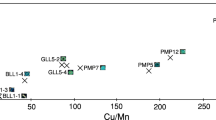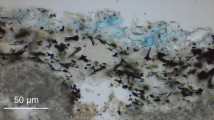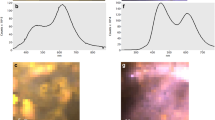Abstract
COLOURLESS diamonds are rare—most have a slight natural yellow colour which makes them unsuitable as gem stones. However, a strongly coloured gem quality diamond is very valuable. Neutron irradiation is sometimes used to ‘treat’ diamonds to strengthen and improve the yellow colour, but their value is decreased if the coloration is known to be artificial. For many years gem testing laboratories have concentrated on an absorption line at 595 nm to decide the pedigree of yellow coloured diamonds. Crowningshield1 examined a very large number of treated and untreated diamonds and found that all treated diamonds except one showed the 595 nm line, whereas in only two cases of uncertain history was this line present in natural untreated stones. The rarity of this line in untreated diamonds has been confirmed by Anderson2 who further states (personal communication) that it is never seen in a cut and polished sample. The apparent universality of the 595 nm line in treated diamonds, and its absence in untreated diamonds has therefore been used has a guide to a diamond's history, and indeed the Gemological Institute of America has based its certificates of authenticity on this criterion1. This note draws attention to the fact that absorption at 595 nm in a treated diamond may be destroyed without significantly altering the colour of the stone.
This is a preview of subscription content, access via your institution
Access options
Subscribe to this journal
Receive 51 print issues and online access
$199.00 per year
only $3.90 per issue
Buy this article
- Purchase on Springer Link
- Instant access to full article PDF
Prices may be subject to local taxes which are calculated during checkout
Similar content being viewed by others

References
Crowningshield, G. R. Gems Gemol. 9, 99–104 (1958).
Anderson, B. W. J. Gemmol. 9, 1–11 (1963).
Clark, C. D., Ditchburn, R. W. & Dyer, H. B. Proc. R. Soc. A234, 363–381 (1956).
Walker, J., Vermeulen, L. A. & Clark, C. D. Proc. R. Soc. A341, 253–266 (1974).
Davies, G. Chem. Phys. Carbon 31, 1–143 (1977).
Davies, G. & Summersgill, I. Diamond Research 1973 6–15 (Suppl. Ind. Diamond Rev. 1973).
Anderson, B. W. in Gem Testing (Butterworths, Sevenoaks, 1971).
Thomaz, M. F. & Davies, G. Proc. R. Soc. (in the press).
Author information
Authors and Affiliations
Rights and permissions
About this article
Cite this article
COLLINS, A. Investigating artificially coloured diamonds. Nature 273, 654–655 (1978). https://doi.org/10.1038/273654a0
Received:
Accepted:
Issue Date:
DOI: https://doi.org/10.1038/273654a0
Comments
By submitting a comment you agree to abide by our Terms and Community Guidelines. If you find something abusive or that does not comply with our terms or guidelines please flag it as inappropriate.


